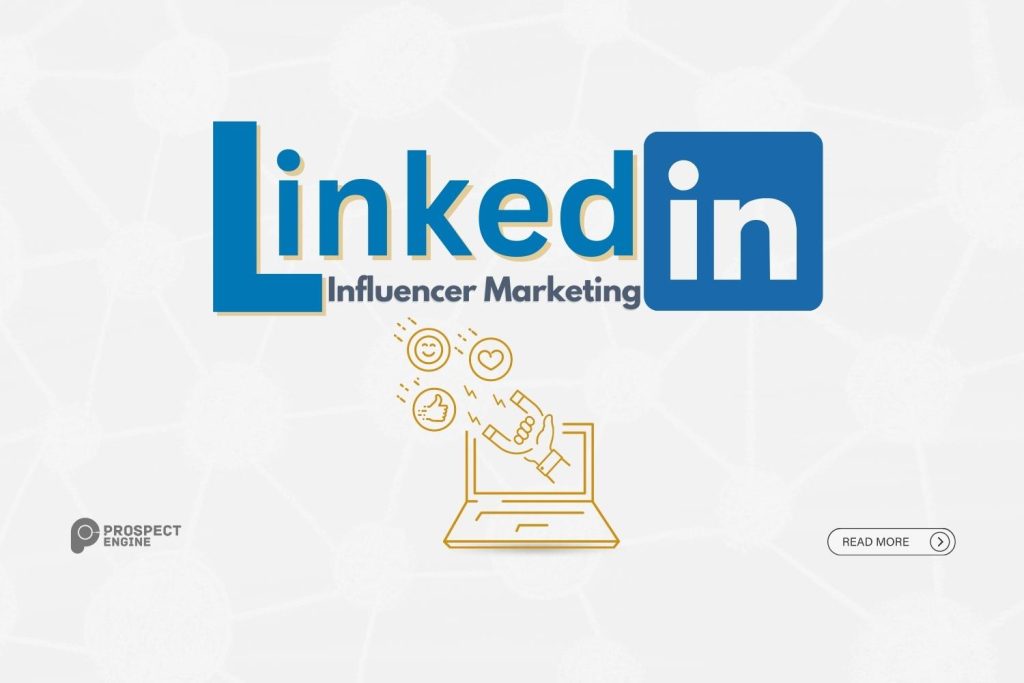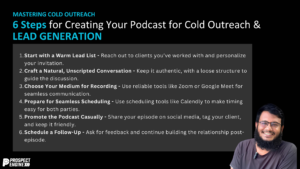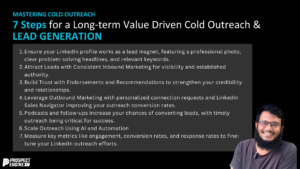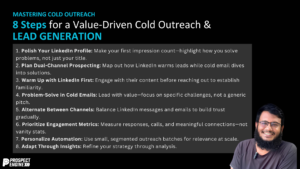The Beginner’s Guide to LinkedIn Influencer Marketing
Influencer Marketing has become a powerful tool for boosting brand awareness and reaching new audiences. With over 875 million members in 200 countries, LinkedIn has established itself as the most sophisticated social media platform for professional growth and networking. In this ever-evolving digital landscape, leveraging LinkedIn’s Influencer Marketing can be a game-changer for businesses looking to build their thought leadership and expand their reach.
The vast membership of LinkedIn is proof that it’s not just another social media platform but a powerful tool for Influencer Marketing. In the business world, LinkedIn is essential for professionals to expand their networks, build credibility, and utilize its offerings of industry news, actionable insights, social selling, and new contacts for job seekers and employers alike.
LinkedIn’s significance is also reflected in the statistics: 92% of B2B marketers prefer using LinkedIn over other platforms, and 80% of B2B marketing leads from social media come from LinkedIn. With 61 million senior-level influencers and 40 million decision-makers, LinkedIn’s membership is a goldmine for anyone looking to establish their thought leadership and expertise.
Despite the common misconception of LinkedIn as a dry platform, it’s actually a hub for Influencer Marketing. The platform’s videos are informative and captivating, while its blogs provide insightful commentary on the latest industry trends.
As a beginner in the world of LinkedIn influencer marketing, it may seem daunting to stand out amongst a sea of CEOs, CMOs, coaches, and consultants vying for attention. But, as they say, where there is a will, there is a way. With a well-crafted approach, establishing oneself as a thought leader or expert on LinkedIn can be a highly effective means of marketing without it feeling like marketing.
So, how does one break through the clutter and make LinkedIn influencer marketing work for them? Through our experiences, we present a comprehensive beginner’s guide to crafting a LinkedIn influence, complete with fundamental concepts and advanced tips to help you succeed.
What Is LinkedIn Influencer Marketing?
Influencer marketing is a compelling strategy that leverages the trust and authority of thought leaders, experts, and celebrities on social media platforms to captivate the attention of their followers toward particular brands, companies, or services. By partnering with influencers, brands can tap into the trust and influence they have built with their followers, delivering their message in a way that resonates with their target audience.
Every social media platform has its own set of Influencers, from comedians to fashion icons. LinkedIn prioritizes influencers with expertise and knowledge in specific industries, making it an ideal platform for Influencer Marketing. Partnering with LinkedIn influencers can provide companies with a shortcut to reach and authority, which would typically take years to establish. This approach offers a competitive edge in today’s crowded digital landscape.
The Rise Of The LinkedIn Influencers
The rise of LinkedIn influencers has made it challenging to capture a targeted audience’s attention effectively. Today’s business world demands experts who can offer thought-provoking solutions and innovative perspectives, which has led to a new type of influential voice, including founders, investors, and academics. These influencers actively engage with their audience on various business and workplace topics through podcasts, blog posts, and LinkedIn posts, making it an excellent platform for Influencer Marketing.
However, as the influencer arena becomes increasingly congested, the question arises: How does one stand out and establish oneself as a top influencer on LinkedIn?
Personality-Driven Thought Leadership Driving Products & Services
Contrary to popular belief, LinkedIn influencers are not just boring techies who spout technical jargon. In fact, many of these individuals have mastered the art of making complex ideas accessible and engaging to their audiences.
From Scott Galloway, a professor at NYU’s Stern School of Business, to Tim Ferris, the author of the 4 Hour Workweek, to Gary Vaynerchuk, a dynamic marketer, entrepreneur, and investor, these LinkedIn influencers have carved out a niche for themselves in the LinkedIn ecosystem. They use the platform to share their ideas, promote their work and products, and connect with their followers.
Take Bill Gates, for example. With over 36 million followers, the tech guru and philanthropist share his thoughts on books, healthcare, innovation, climate change, and sustainability. Although his posts may often include a subtle plug for Microsoft and its various development centers, Gates’ musings come from the heart and serve to enhance the Microsoft brand.
Ryan Reynolds, on the other hand, has a more lighthearted approach to his LinkedIn presence. With over 1.3 million followers, the part-time actor and business owner humorously describes himself as having a “proven track record” of acting for three decades. Yet, behind the jokes, Reynolds is a savvy entrepreneur who leverages his celebrity and sense of humor to promote his businesses.
Finally, there’s Marsha Collier, an author of 40 “For Dummies” books, who covers topics such as social media, customer service, and eBay. Collier’s engaging style and interactive content have earned her a loyal following on LinkedIn, making her celebrity on the platform even greater than it is elsewhere.
Why LinkedIn Influencer Marketing Is Becoming Increasingly Important
The vast, sprawling wilderness of the internet is a maze of endless advertisements and faceless promotions, with companies’ efforts in marketing often resulting in a fruitless waste of time and money due to the oversaturated “spray and pray” approach.
Despite the noise, people still yearn for recommendations and guidance. Most of that guidance comes from trusted experts and authorities in the digital age. Once we recognize someone as a reliable source of information, their voice becomes amplified, and we instinctively seek out their opinions on various issues. This is where LinkedIn influencers have found great success. They have built a loyal following and a trustworthy reputation, making their promotion of products and services much more impactful than other forms of marketing.
As the online audience continues to fragment and diversify, the role of trusted influencers is only set to become more important in navigating the overwhelming sea of information. Their preferred mediums of communication also support this trend.
LinkedIn influencers engage with their audience through microblogging posts, video content, and interactive elements such as polls and live broadcasts, like interviews and “ask me anything” sessions. This style of engagement allows them to build a deeper connection with their followers, further solidifying their position as a trusted authority in their respective industries.
People Want To Buy From People (They Trust, Resonate, And Have Built A Rapport With)
With its limitless frontiers, the digital realm can often leave one feeling detached and disconnected from the world around them. But the interactions on LinkedIn, a bastion of professional networking, defy these trends by offering a thoughtful and purposeful arena for engagement. Unlike other social media platforms where swift, emoji-laden missives and fractured, typo-riddled soundbites reign supreme, discussions following a post by a LinkedIn influencer often delve into thoughtful exchanges of ideas and links to informative resources. These conversations, grounded in a more reflective and deliberate pace, transcend the fleeting and ephemeral nature of the 24-hour news cycle.
The appeal of LinkedIn influencers lies in their capacity to bring a sense of humanity and connection to an otherwise sterile and impersonal online landscape. Engaging with these thought leaders can spark curiosity, stoke imagination, and impart new knowledge. This type of relationship building, coupled with a sense of community, can inspire users to consider products and services these influencers promote, making for a valuable connection between influencer and brand.
How Many Followers Do You Need To Be An Influencer?
The world of influence is one where numbers matter, but not necessarily in the way one might think. Sure, having millions of followers might seem like the ultimate goal for celebrities, but for those who’ve crafted a loyal following through sheer talent and inspiring content, success can be achieved with just a few thousand fans.
The difference between someone like Bill Gates, who comes to platforms like LinkedIn with pre-existing fame, and micro- or nano-influencers, who’ve built their following through genuine connections and exceptional content, cannot be understated. Micro-influencers, those with around 1,000 to 40,000 followers, and nano-influencers, with less than 1,000, often occupy specific niches and boast a level of expertise in a particular area that sets them apart.
Though their numerical count may be smaller than celebrities, the relationship between micro- and nano-influencers and their core audience is often much more intimate, resulting in higher engagement rates. So, while having millions of followers may seem like the epitome of success, being a successful influencer means much more than just having a large number of fans.
LinkedIn Influencer Marketing Examples
Arielle Nissenblatt, the head of Community & Content at SquadCast.fm, has gained recognition with her popular newsletter that addresses the unique concerns of podcasters, boasting a following of 3,000. Nissenblatt’s expertise in the field shines through in her LinkedIn posts, where she engages her followers with thought-provoking discussions and insightful observations on the latest trends in podcasting. With her finger on the pulse of the industry, Nissenblatt’s promotions are always well-received by her audience, who trust her to provide on-brand, valuable content.
Adam Grant, a renowned author and organizational psychologist at Wharton, leverages his nearly 5 million LinkedIn followers to share his inspiring ideas on behavior and management. But Grant doesn’t stop there – he also uses his platform to remind his followers that his books are readily available for purchase.
Horace Dediu, Co-Founder of Micromobilty Industries, is a visionary at the forefront of short-distance, single-person rides. Dediu uses LinkedIn as a platform to share his ideas on alternative forms of transportation and to promote his company’s newsletter and events, reaching a following of 168,972.
Conclusion
LinkedIn is an exceptional platform for establishing your brand and establishing your authority in your field. With a bit of creativity, strategy, and the right tools, you can quickly become a sought-after influencer on the platform. To gain inspiration and guidance, peruse our recent blog post entitled “How to Become a LinkedIn Influencer.”
But don’t stop there! Our LinkedIn Content Service can help elevate your online presence even further. We’ll take your ideas and transform them into captivating posts that will pique the interest of your current network while attracting new followers. If you’re ready to make a splash on LinkedIn and assert yourself as a thought leader, don’t hesitate to reach out to us today. Let’s work together to boost your profile and showcase your professional prowess.





